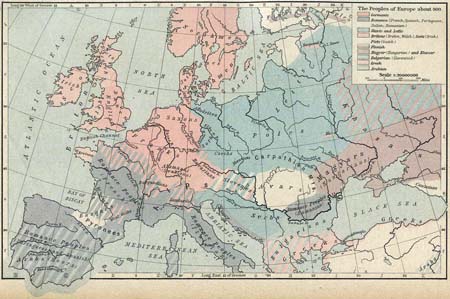

Norse/Thule travelers sailed extensively,trading, warring, and spreading knowledge. Norse Ships were technological marvels, built to withstand long journeys as well as shallow water.
Remarkably they could also be carried by the crew over land if needed. Warships were called Langskip - Longship, and trade ships were called Knorr.
They used coins and tokens amongs themselves and with some countries. No doubt voyages were long and boring, so they must have entertained each other with fantastic stories about what they saw.
Stellar Clocks
How did they know where they were? At night, knowing your position is critical, especially if reliable clocks don't exist. Norse sailors used the movement of the planets to tell the time.
To be a good sailor you needed to be a good astronomer, and knowing which planet you were looking at could prevent costly mistakes.
The Mayans had a clever system for predicting if Venus would appear in the morning or at night, as it can be mistaken for Mercury. The Norse devised a notation to explain the movement of the planets, and this is became astronomy (the star arrangement)
and astrology (lists of measurements of the stars)
Homeland / Father land. Eden / own land. Norse people who traded animal furs with neighbouring areas.
The Norse languages originated around here, and the idea of naming things including the stars and planets originated here.
The ancient Swedes understood the movement of the major planets and navigated by the stars, they took the concept of writing around the northern territories.
Engeland, Angel-Land, Angleland, Angeln, Angulus
Land of light people, light things "Angular faces"
The Land of Milk and Honey
Norse travelers traded Silver, Milk and Honey with England.
Originally the Angles [sic] lived in an area of Germany, but migrated to England.
Estonia , East lands
Land of grains, fruit, iron, and amber (glass).
Eire land
Ierne land
Hibernia
Iouernia
Land of iron and bronze
Vinland
Wineland
Land of wine
Friezland / Vreesland / Land of large people / Carpenters
Scandinavia
Hol-Land
(empty / hollowed out land)
Nederland (other side of the sky / gloominess)
Nether-land / Underworld
Land of trees (Marks)
North Canada, Labrador, part of the Newfoundland
Land of dams.
Rus = a rower in a ship, a strongman.
Land of strong kings (Stars / Tsars)
Literally - Land of gowned people, cloths (serk)
The wariors here were called Beserkers (people covered in cloth)
Red land
Hell-Land, North America, Canada